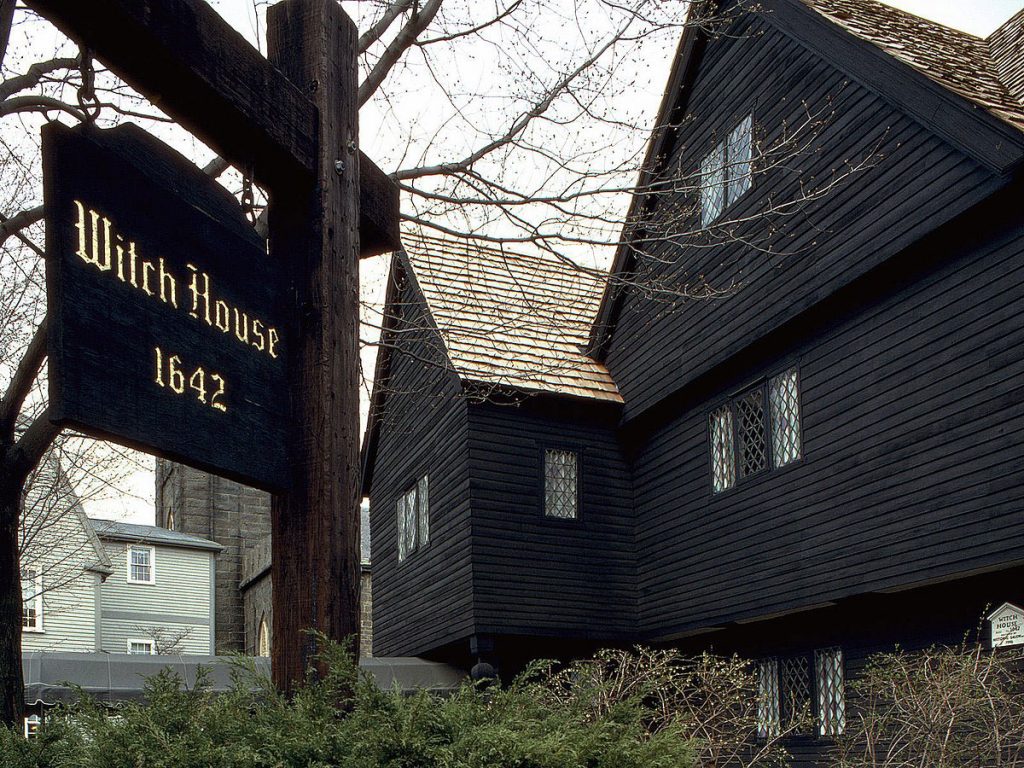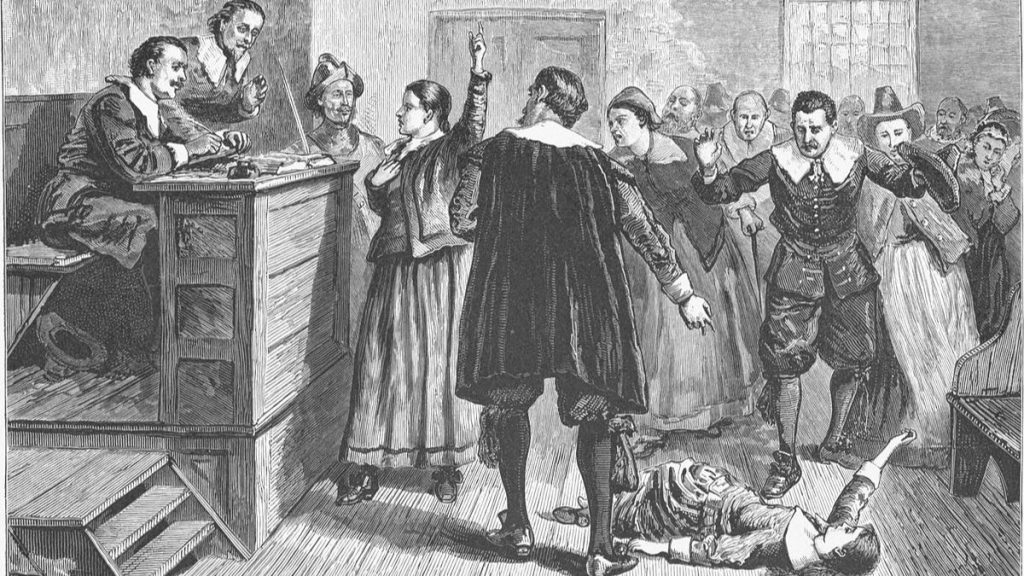There have been witch hunts since the Middle Ages. But the most famous witch hunt in the world is undoubtedly that of Salem. Indeed, the name of this city resonates in the idea that we have of witches, as the city of witchcraft. However, the story of the witchcraft trials held near Salem is a consequence of deeper issues. Indeed, if witches are “women with powers supernatural and in particular the ability to work evil spells with the help of the devil or evil forces., a craze was created for witch-hunting, first in Europe, then in the American colonies. More than 200 people will be accused of practicing witchcraft and 20 will be sentenced to death. Here is a “short” story about the Salem witch trials.
The Witch Hunt: The Result of Political, Religious, and Racial Problems
At the end of the 1680s, Salem is a quiet town living from fishing and maritime trade. In a very short time, Salem will be turned upside down by the biggest witchcraft trials, having taken place in a small village nearby, Danvers. At that time, colonial America experienced many upheavals. Indeed, since 1688, King William’s war has pitted the English against the French in the 13 colonies. Thus, many people found refuge in Salem. This unfortunately caused tensions within the colony. Indeed, the colony is split in two: on one side, a prosperous town, on the other, an agricultural village. The settlers quarrel over resources. But the inhabitants of the agricultural village are also divided. Some want their independence, others don’t. Some Puritans believe that the devil is the source of all these problems.
In 1689, the villagers obtained the right to found their own church, and chose Reverend Samuel Parris as pastor. The latter is not unanimous, because of his austere methods, and the fact that he wishes to recover the deed of ownership of the presbytery he occupies. Some inhabitants therefore wanted to drive him out and stopped paying his salary in October 1691. It was therefore in this somewhat fragile context that witchcraft accusations began.
Accusations, confessions, denunciations and convictions
1692, Salem is energized. Young Betty Parris throws funny tantrums. She screams nonsense, writhes around, throws things, etc. Reverend Parris’ niece, Abigail Williams, and another young girl, Ann Putnam, have similar seizures. Quickly, these crises were put on the back of the Devil. Doctors not finding any other origin to their crises. Thus, on February 29, brutalized, the three young girls ended up denouncing Tituba, the slave of Parris, Sarah Good, a homeless beggar, and Sarah Osburn, an senile woman, to be at the origin of their evil. The three women are therefore accused of witchcraft.

Sarah Osburn and Sarah Good claimed their innocence. But Tituba confessed: “The devil came to me and ordered me to serve him. » She then told stories of black dogs, red cats, a man who made her sign a black book, etc. According to him, other witches would live among the people of Salem, and would dream of destroying the Puritans. So it had become a matter of life and death, these witches had to be found. It was then that a wave of denunciations swept over Salem. The local magistrates then carried out the investigation and more and more women but also men were accused of acts of witchcraft. Martha Corey, a faithful member of the Salem Village Church, was a witch. Sarah Good’s 4-year-old daughter, too. Paranoia gripped the people of Salem, and under torture the defendants turned in even more people.
Creation of a tribunal and dissolution
On May 27, 1692, a special tribunal was established by Governor William Phips. The first “witch” to be tried was Bridget Bishop, a talkative old lady. Yet, even though she claimed her innocence, the court concluded that she was a witch, and this, only on speculation. Although the Reverend Increase Mather, president of Harvard University and father of Cotton Mather, denounced that the accusations and convictions were based on much too light evidence, or even testimonies of undemonstrable supernatural events, 19 “witches” were hanged at Gallows Hill. “It would be better for ten accused witches to escape than for one innocent person to be convicted”he said.

However, Governor William Phips ended up disbanding the court he had created. Indeed, when accusations tended to say that his own wife was also a witch, he made the decision to replace it with a superior court in which “spectral” accusations are no longer taken into account. Of the 56 accused of witchcraft, only three were convicted of witchcraft. However, William Phips will pardon them, along with the other five people awaiting execution. Then, he finally pardoned all the other people imprisoned for witchcraft in May 1693. Nevertheless, the damage was done, since in addition to the 19 people hanged, a man had been crushed to death, and many people had died in prison, including an infant a few months old.
The mea culpa of the accusers
In time, the accusers apologized, like Judge Samuel Sewall. In 1701, a day of fasting was proclaimed as a commemoration of the Salem trials. In 1702 the trials were ruled illegal. Then, in 1711, the families of the condemned received financial compensation. However, it was not until 1957, 265 years after the Salem trials, that the State of Massachusetts officially apologized.
We wish to give thanks to the author of this write-up for this remarkable material
The Story of the Salem Witch Trials
Explore our social media profiles and also other related pageshttps://nimblespirit.com/related-pages/


